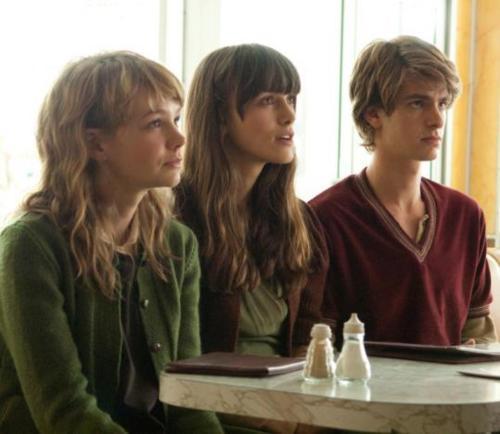SERIOUS THOUGHTS OF LIFE AND DEATH
Kazuo Ishiguro is a Japanese novelist who has received a good deal of recognition in this country and at least two of his works have become films: “The Remains of the Day” and “Never Let Me Go.” I have read none of his writings, but plan to correct this omission soon. What brought him to my attention is the movie, “Never Let Me Go,” released in 2010. I found it an excellent if highly disturbing story about children who are clones of society’s dregs — prostitute, criminals and derelicts — and are bred for the sole purpose of providing donor organs to “originals.”

(courtesy: Alex Bailey, Fox Searchlight Films)
These clones might live to give two or three of their organs to strangers but by the fourth they are usually “complete,” a euphemistic word for dead.
My purpose is not to review the film but to use the plot as an example of how tension can be raised in a story, not by keeping the reader or audience ignorant of what lies ahead, but by revealing outcomes at the beginning. The donor children in “Never Let Me Go” learn early what their role in society is to be. They are brought under the shadow of death before they reach puberty and so when the three main characters live long enough to form a love triangle, their compressed lives make their plight desperate as well as tragic. When the anesthesiologist straps a mask across each of their faces for the last time, these three will draw breath with the heightened sensibility of what it means to be and not to be.
Ishiguro’s method for creating dramatic apprehension is different from Beckett’s in his play, “Waiting for Gadot,” where he keeps the audience off balance through a series of events which cannot be anticipated and leave the characters having no option but to wait to discover what happens next.
While the two literary techniques appear to move in opposite directions, the suspense generated by both is true to life and so we react to both. Like the children in “Never Let Me Go,” we are all waiting to be “completed” and certainly, we are plagued by questions of an uncertain destiny. As conscious beings, we live within the ambiguity of knowing and not knowing and cope with the stress by using a set of mental gymnastics that can, at times, seem delusional… hence the origin of myths.
An artist who can tap into the tension created by the ambiguity will either earn our respect or we will be obliged to turn away.